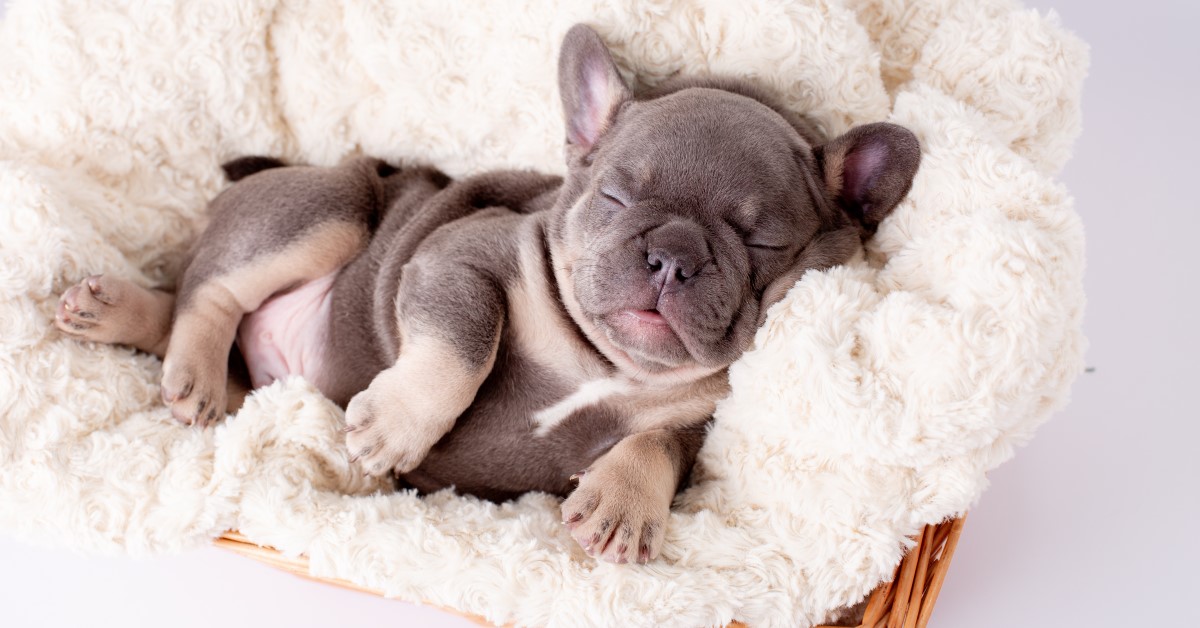Do Dogs Dream?
Many people wonder if their dogs can actually dream and the answer is yes, scientific evidence indicates that dogs do dream.

Have you ever watched your dog sleep? It’s not uncommon to see them twitch, move their paws, chatter, or make odd noises. While doing these things, you may have wondered if your dog is actually dreaming. The short answer is yes! Dogs can and do dream similar to humans. They can also have “bad dreams” or nightmares in which they feel anxious or threatened. While no one knows for sure what dogs dream about, scientists are taking the necessary steps to bring us closer to finding out about how our canine companions dream.
What Exactly are Dreams?
Sleep is a natural state where voluntary muscular activity and consciousness are reduced. While sleeping, the body has the opportunity to rest and recharge. The brain also uses this time to process information and experiences that occurred during wake hours.
During sleep, the brains of both dogs and humans function similarly. Brain waves show that pets go through multiple stages of sleep, starting with slow-wave sleep (SWS) when your dog first falls asleep. During this stage, mental processes remain quiet, but muscle tone is still active, meaning the body may not be completely relaxed. Your dog will appear to be resting calmly but may awaken easily.
As a deeper stage of sleep occurs, your dog will experience rapid eye movements in which the eyes dart rapidly under the eyelids. This stage of sleep is called REM sleep and is characteristic of fast and irregular brain waves. The brain experiences heightened mental activity at this stage, and your dog may breathe rapidly, whine, or move his legs.
Both dogs and humans experience these two stages of sleep and have similar phases of electrical activity in the brain. From this information, experts have concluded that dogs likely dream in the same way that humans do, as dreams are part of the natural sleep cycle.
What Do Dogs Dream About?
While no one really knows what dogs dream about, we do have some clues. Many researchers believe that dogs dream about the things they love, such as chasing squirrels, playing fetch with their owner, or running in the yard. When dogs experience nightmares, they may dream about things they don’t like, such as thunderstorms, being alone, or getting into fights with other dogs.
How dogs dream and what they dream about may also be affected by their breed. According to Stanley Coren, a professor emeritus of psychology at the University of British Columbia, small dogs typically have more frequent dreams than larger dogs. However, the duration of dreams in small dogs is usually shorter. In comparison, large dogs tend to have fewer but longer dreams.
How Do I Know If My Dog Is Dreaming?
Although you can’t know for sure, some signs could indicate that your pet is dreaming. Observe your pet as he is dozing off to sleep. As the sleep becomes deeper, your pet’s breathing will become heavier. The first dream typically starts after about 20 minutes after closing his eyes. When in a dream state, your pet’s breathing may become irregular. You may see leg twitching, teeth chattering, muscles quivering, and muffled growling and barking. Movement may also occur in the eyes and nose.
The reason why dogs move so much during sleep is due to a component in the brain stem known as the pons. The pons is responsible for paralyzing the larger muscles in the body during sleep to prevent you from acting out your dreams. In puppies, the pons is often underdeveloped, which is why puppies often move a lot during sleep. The pons also starts to work poorly in older dogs, which is why you might see excessive leg twitching or other movements.
Some pet owners worry that their dog is having a seizure rather than a simple dream. Although seizures and movements during dreams can appear similar, there are ways you can tell the difference. Dog seizures are abnormal motor responses that originate in the brain, while dreams are normal electrical responses. Your dog might be remembering a walk he took earlier in the day or a rabbit he chased out in the yard.
Dogs that dream often have twitching of the muscles or paddling of the feet. While these can be symptoms of a seizure, they typically present in different ways. The gentle twitches that occur during a dream will typically last just a few seconds, while twitches that occur during a seizure are longer lasting and more violent. During a seizure, the limbs become more stiff and rigid and the dog may foam or drool from the mouth. Once the dog regains consciousness, a dreaming dog will act normal while a dog that has had a seizure may appear distressed or disoriented.
Should You Wake a Dreaming Dog?
You may have heard the saying, “Let sleeping dogs lie.” Although it’s not always necessary to follow this piece of advice, there are reasons why you should avoid waking your sleeping dog when unnecessary. Disrupting a dog during REM sleep can have certain consequences. It can take your dog several moments to realize that he is no longer dreaming, during which time he may exhibit aggressive or abnormal behaviors.
Like humans, dogs often play out scenarios in their dreams and use sleep to concrete experiences into memory and work through emotions. Waking your pet in the middle of a dream could prevent your pet from reaching a satisfactory resolution. If you do decide to wake your pet up from a dream, do so by gently rousing him or softly saying his name.
Ready to start saving money on pet wellness care?
Then take a look at Mint Wellness, the pet wellness plan that provides fast reimbursement on routine pet care. Save on vaccinations, wellness exams, preventatives, dental, and more!
Learn More


